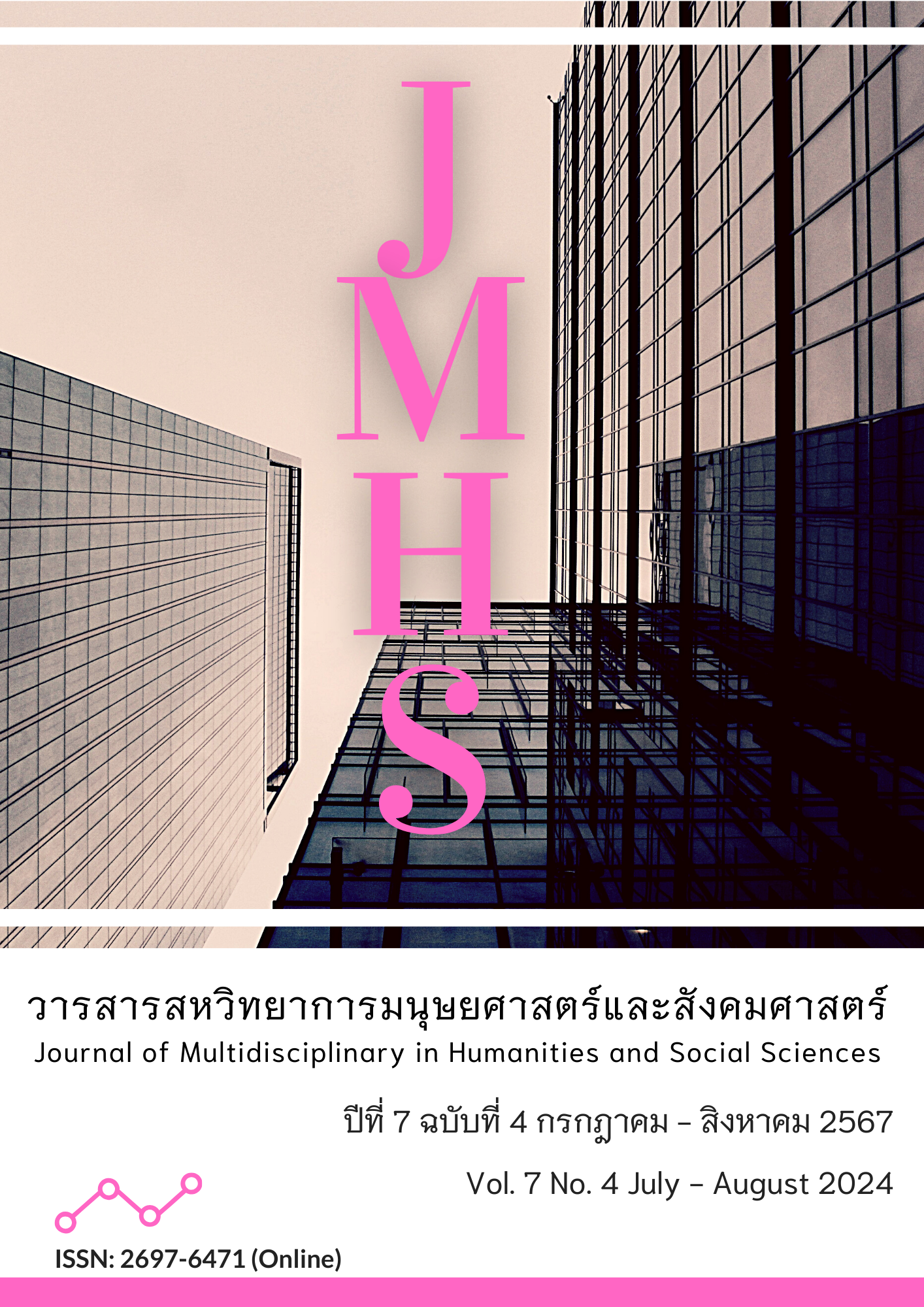The Application of Western and Chinese Musical Theory in Contemporary Piano Four-Hand Composition--Based on Suntharaporn Ensemble's song "Songkran Festival"
Main Article Content
Abstract
Integrating different genres, styles, and cultural elements in contemporary music composition to create new musical styles or forms has become a trend. The author composed a piano four-hand composition in this study, employing the theme melody from the song "Songkran Festival" by Suntharaporn Ensemble. This article aimed to: (1) compose a piano four-hand by combining Western and Chinese music theories in conjunction with the pop song materials from the Suntharaporn Ensemble in Thailand; (2) analyze and describe the composition techniques of this piano four-hand composition "Songkran Festival." This composition uses a synthesis of Chinese and Western music theories. The melody is based on Thai song melodies with enjoyable rhythmic patterns and harmony in modern music techniques, combining a Chinese flavor to make it more diverse and create a sense of participation in the famous Songkran Festival.
Article Details

This work is licensed under a Creative Commons Attribution-NonCommercial-NoDerivatives 4.0 International License.
Views and opinions appearing in the Journal it is the responsibility of the author of the article, and does not constitute the view and responsibility of the editorial team.
References
Fan, Z.Y. (1981). Overview of ethnic pentatonic modes. China Conservatory of Music Press.
Fan, Z.Y. (2003). Pentatonic-mode harmony in Chinese music: Theory and practice, Shanghai Musical Publisher.
Gao, W. J. (2021). Basic course of melody analysis. Higher Education Press.
Junlaprom, N. (2008). Unity strategies in Suntaraporn's provincial and place songs. Chulalongkorn University.
Li, Y.H. (2001). Han ethnic mode and its harmony. Shanghai Musical Publisher.
Liu, Y. F (2002). A comparative study of the theory of “mode alternation”. Huang Zhong Journal of Wuhan Conservatory of Music, China, 2, 26-29. DOI: 10.19706/j.cnki.cn421062/j.2002.02.004
Mckoy, C.L., & Lind, V.R. (2022). Culturally responsive teaching in music education: Form understanding to application (2nd ed.). Routledge.
Ning, E. (2018). Musical form and composition analysis. Central Conservatory of Music Press.
Phakkhaphanon, S. (2019). Lotus: Simile meaning in Suntaraporn’s Songs. University of the Thai Chamber of Commerce Journal Humanities and Social Sciences, 37(2), 139-151. https://so06.tci-thaijo.org/index.php/utccjournalhs/article/view/165569
Sudjaritkul, D., & Phoasavadi, P. (2015), Urban Bangkok singing style: Thai Lukkuung singing of Daojia Paijit’s musical identity. Journal of Fine and Applied Arts, 2(1), 1-6. https://so02.tci-thaijo.org/index.php/faa/article/view/39241
The Teaching and Research Office of Work Analysis at the Central Conservatory of Music. (2021). Sample collection of music form and composition analysis course (Public Course 3). Central Conservatory of Music Press.
Tong, Z. L. (2020). Chinese traditional music studies. Fujian Education Press.
Zhao, Y.R. (1928). Several experiments in Chinese harmony. Music Magazine.
Zhao, S.G. (1964). Study on “circle-of-fifths” tuning system. Shanghai Culture Publisher.


